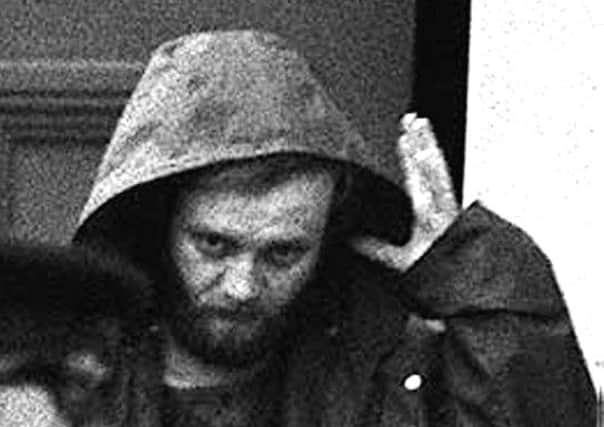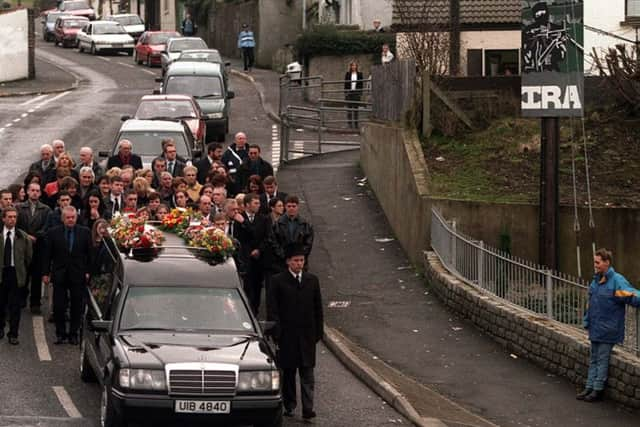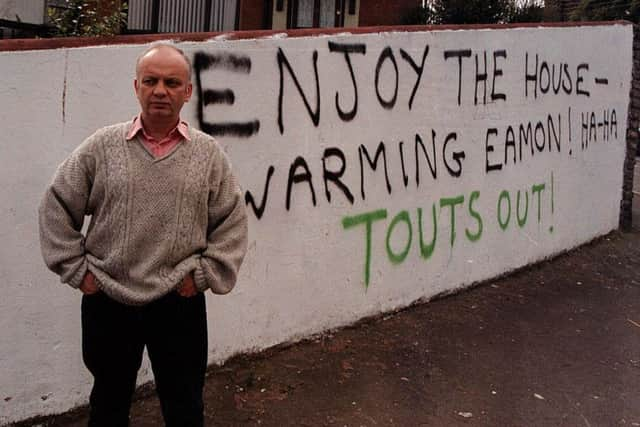Eamon Collins murder 20 years on: From stupid and tragic to lonely and brutal


And despite the passage of time, the ex-officer added they still continue to hold out hope that “mistakes” made by Eamon Collins’ killers will see them brought to justice yet.
Collins (a 45-year-old married father) was found killed on Doran’s Hill, a quiet road on the western edge of Newry, on January 27, 1999.
Advertisement
Hide AdAdvertisement
Hide AdHe had formerly been a major part of the IRA’s intelligence and internal security network, though claimed not to have killed anyone directly.


In 1985 he agreed to turn supergrass, and though he later recanted his testimony, he went on to pen an autobiography called Killing Rage in 1997 in which he detailed not only murder missions but widespread incompetence and petty rivalries within the IRA – concluding that he had become “deeply hostile” to the organisation and would “look forward to its demise”.
Despite threats he refused to leave Newry.
At his inquest in 2007, coroner John Leckey dubbed his attackers “sub-human”. He had been stabbed in the face about 20 times.
Communicating through an intermediary, an ex-police officer familiar with the situation has now said it was “one of the most barbaric crime scenes I’ve ever witnessed”.
Advertisement
Hide AdAdvertisement
Hide Ad

Though often described as a “frenzied” onslaught, the ex-officer indicated there was a calculating element too.
“There were clear and deliberate efforts made to mutilate the victim as an act of revenge and to prevent an open coffin at the wake,” they said.
“He was stabbed and slashed repeatedly in the face. No doubt it was carried out by PIRA members along the same lines as the ‘no claim, no blame’ DAAD murders.
“The investigation remains very much open given mistakes made by the attackers, and forensic opportunities left at the scene.”
Advertisement
Hide AdAdvertisement
Hide AdThis echoes news which emerged in 2014, when it was reported that DNA evidence was recovered from the scene.
There were a number of arrests that year, but no charges.
WHAT DID COLLINS WRITE ABOUT?:
The blurb for Killing Rage says it seeks to depict “political violence in all its stupidity and tragedy”.
In its introduction, Collins wrote: “If I have blackened the IRA’s name, I have done so with the heat of truth... If people think I have been harsh on my former comrades, I hope they will recognise I have been equally harsh on myself.”
Whilst some IRA men he knew were “brave and honourable”, he said, others he knew were “the scum of the Earth”.
Advertisement
Hide AdAdvertisement
Hide AdAt one stage mooted as a Sinn Fein election candidate, his fall-out with the republican movement had begun when after he was arrested in 1985.
By that stage, he wrote he had become “disillusioned” and began to believe the IRA were fighting for “a twisted version of freedom”.
He gave detailed evidence against himself and comrades, and was charged with 50 serious crimes including five murders. His defence lawyer was Paddy McGrory (father of Barra, later the DPP). But when it came time for his trial, he had a change of heart.
Instead he falsely blamed his own cousin Mickey for his crimes, and claimed hostile police had framed him.
Advertisement
Hide AdAdvertisement
Hide AdJudge Justice Higgins (whose home was attacked with an IRA rocket during the trial) decided there had been a “reasonable possibility” Collins could have been ill-treated in custody and freed him – a decision which further reinforced to Collins the IRA campaign against the UK state was wrong.
Nonetheless, having dropped his evidence he still hoped to be met with tolerance within republican circles – but was told in 1987 he would be “executed” if found north of Drogheda.
Disregarding the order, he returned in the mid-’90s.
He knew the IRA would be angered by his book, because he had already faced intimidation; for example, his car was firebombed in 1995 by someone whom he said he knows was a Sinn Fein member.
As well as writing the book, he also went on to give evidence against Thomas ‘Slab’ Murphy in a 1998 libel trial.
DID HIS CONSCIENCE TRULY WIN OUT?
Advertisement
Hide AdAdvertisement
Hide AdFormer IRA man Anthony McIntyre has said Eamon Collins’ supergrass testimony was motivated by trying to “save his own skin”, not by morals.
Mr McIntyre was convicted of killing a UVF man during the Troubles.
Now 61 and living in the Republic, he once briefly met Collins when they were both being interviewed by a reporter.
“It [Killing Rage] was a good book,” he said.
“But he crossed a line. He seriously crossed a line in deciding to go supergrass. I was never persuaded it was for good motives or anything – I never am persuaded by this.
Advertisement
Hide AdAdvertisement
Hide Ad“I found the book self-serving... trying to justify his decision, trying to put a gloss on his decision to go supergrass.
“He made it look as if he’d had a crisis of conscience. The change of heart didn’t cause him to go supergrass; [going] supergrass caused him to have the change of heart.
“People can now regard him as remarkably brave or remarkably foolish. He paid a terrible price – he got a very brutal, lonely death.
“Who deserves that?”
William Matchett, an anti-terror intelligence officer who now works as an author and security trainer, said: “There was a conscience there.”
Advertisement
Hide AdAdvertisement
Hide AdHe said it was “naive” of him to believe he could have crossed the IRA in such a way, and survive –adding that the Provisionals have “long memories”.
The republicans of Newry and south Armagh in particular were known to be “merciless people” and “monsters”.
“It’s easy for me to say, but he would’ve been safer getting out of this place entirely and writing from England or somewhere,” he said.